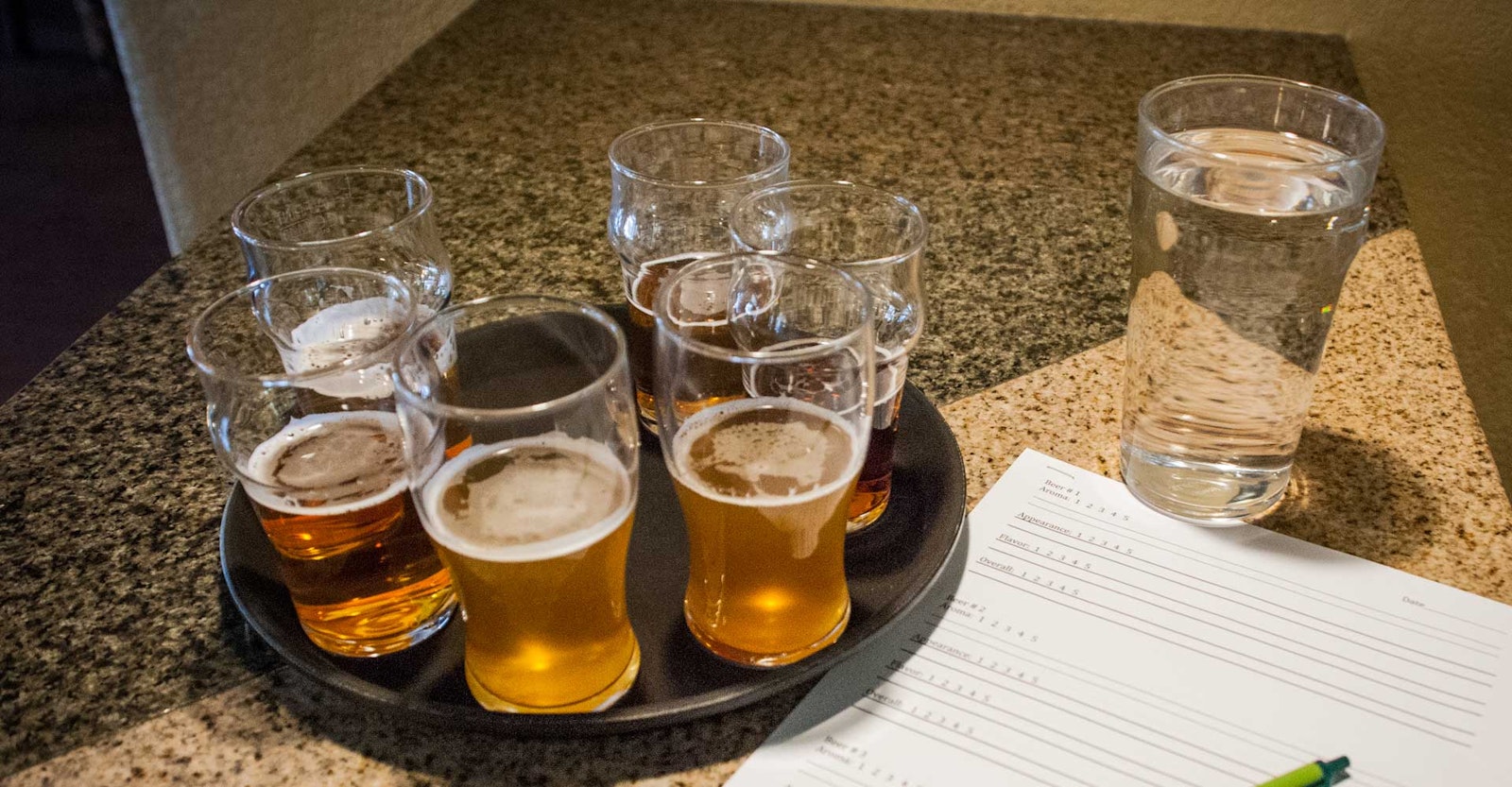In “Facing (Beer) Judgment” last week, we looked at three things to remember when you consider entering your beer in a homebrew competition. Let’s say that you have entered a beer in the competition and you have the results. Whether your beer brought home a medal or not, you’ve received valuable feedback that can have a major impact on the quality of your future batches. You should have a cover sheet and at least two score sheets for each beer you entered. You already know whether your beer won, but looking at your paperwork will indicate why it did—or didn’t—do well.
Start by looking at the cover sheet. There’s a lot of explanatory text here, but the interesting bit is in the box in the middle. Your final assigned score stands out, but more importantly, you can see where in the flight your beer was judged (Ordinal Position in Flight: _ of _). This information can be useful when you’re reading the score sheets because it can affect how your beer was perceived. For example, bigger beers tend to do better late in the flight because of palate fatigue. Crowd skewing can also be a factor; a set of milder or stronger beers before yours can impact a judge’s sensitivity.
With that in mind, look at the individual score sheets. You’ll most likely see the normal BJCP form, but larger competitions may use the checklist version; each one has the same basic information. Read each sheet separately, then compare and contrast what the different judges thought. First, check out the total score at the bottom to get the general context. The judges should be within seven points of one another, but they may vary on how they allocated those points.
You’ll notice it’s a 50-point range, but only a fraction is ever used. Severely flawed beers still get a minimum score between 13 and 19, and the most shining examples of the art rarely get more than 45 points. There’s an official scoring guide on the form, but I find the following interpretation helpful:
- Under 25 points: Your beer has some fairly serious problems. The comments should identify these and offer advice on how to fix them.
- 25 to 29: Your beer probably has some technical flaws, and/or it didn’t match the category. A great beer that’s badly out of style will typically score around 29 points.
- 30 to 37: Your beer may have some minor flaws, or it didn’t quite match the BJCP description. Many entries end up in this range.
- 38 points or more: Your beer is a great example of the style, and the comments will likely offer suggestions for fine tuning. Keep in mind that even with this high a score, your beer may not win if the competition was strong.
The box in the bottom right of the standard form provides an additional shorthand guide to understanding your score, with scales to indicate how close to style you were (Stylistic Accuracy), how well-brewed your beer was (Technical Merit), and how much the judges liked it (Intangibles).
Once you have the big picture, it’s time to read each section. The assigned points can be instructive, but the real value is in the comments where the judges indicate what they observed and how it matched their expectations. It’s helpful if they generally agreed, but people’s palates vary, so one judge may have picked up something that the other missed. The judges will also offer suggestions on how to improve your beer, either to come closer to the style or address technical issues.
For most brewers, the hardest part is embracing constructive criticism, whether the judges found technical issues such as sour flavors and over-carbonation or thought your beer didn’t quite fit the category. Rather than take it personally, sit down and pour yourself a glass of the beer and compare it to the comments. Maybe you never noticed the diacetyl before, but having the descriptor “butterscotch” helps you recognize it. If the judges said your beer missed the style, look at the BJCP guide for a commercial example. Tasting a commercial example of the style next to your beer can show you the differences more clearly than words.
If you still don’t agree with the comments, remember that you might not be as sensitive, the judges may have stricter expectations for the style, or they may have gotten a bad bottle. Give them the benefit of the doubt and look at their recommendations. Next time you brew, remind yourself about what they suggested to improve your process. That attentiveness can’t hurt, and it may help you overcome a weakness you missed before. Remember, no one’s trying to hurt your feelings; they just want to help you make better beer.

